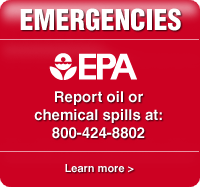
On April 17, 2024, EPA designated two per- and polyfluoroalkyl substances —perfluorooctanoic acid (“PFOA”) and perfluorooctanesulfonic acid (“PFOS”) as hazardous substances under the Comprehensive Environmental Response, Compensation, and Liability Act. Learn more
This video addresses common chemical management and safety issues at warehouses and distribution facilities. Watch the video
EPA surveyed the State Emergency Response Commissions to learn how EPCRA is currently implemented at the state and local levels. View the survey
EPA developed this national handbook as a resource for local and tribal emergency planning committees. View the handbook
The Emergency Planning and Community Right-to-Know Act of 1986 was authorized by Title III of the Superfund Amendments and Reauthorization Act to help communities plan for chemical emergencies. It requires industry to report on the storage, use, and releases of certain chemicals to federal, state, tribal, territorial, and/or local governments. It also requires these reports to be used to prepare for and protect their communities from potential risks.


Learn more about why EPCRA was created and how it helps communities plan and prepare for emergencies.

EPCRA Sections 301-303 establishes emergency planning requirements and requires notifying authorities of the presence of Extremely Hazardous Substances.